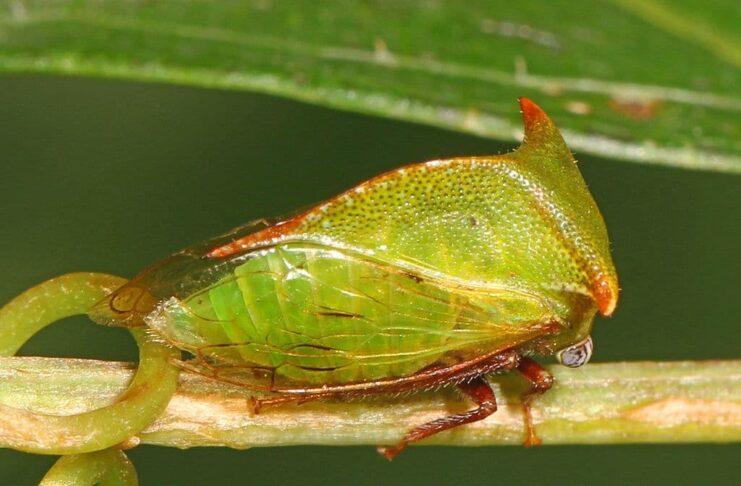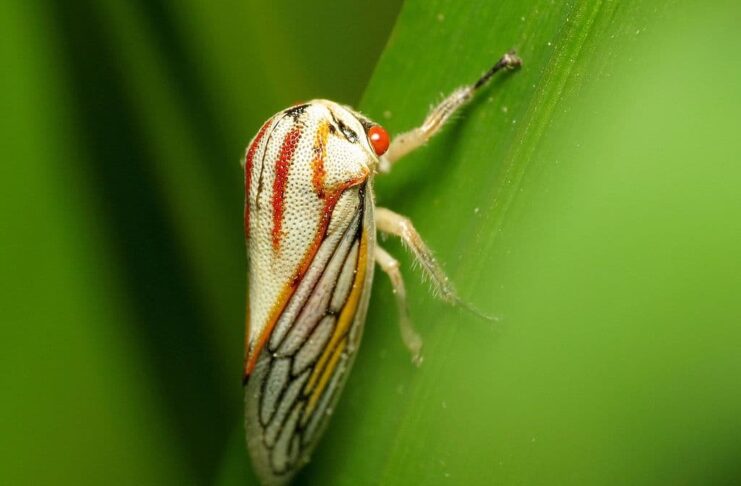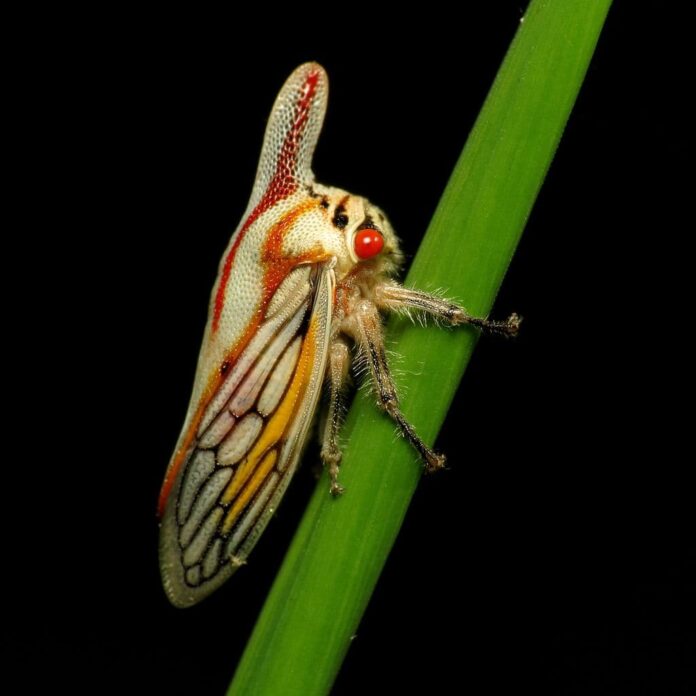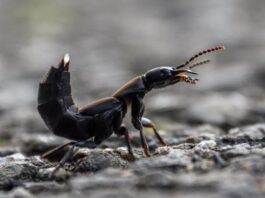Treehoppers are quite fascinating insects, appearance-wise. I want to see more of them so I am doing more research on astonishing treehopper species to show you. They do have a unique look that captures the attention of those who see them. And today, you are going to find 4 beautiful treehopper species on our list below. Don’t forget to share your thoughts and let us know which one you think is the most beautiful.
1Buffalo Treehopper

Scientific Name: Ceresini
Here you are looking at a bright green treehopper species with a triangular shape that provides a perfect camouflage to the bug. At a glance, buffalo treehoppers look exactly like thorns or twiggy protuberances that can fool many predators. The large head, black tips, and ridge on its back earn this species its name due to its resemblance to a buffalo. Both adult and immature buffalo treehoppers feed on sap using their special mouthparts on clover, elm, goldenrod, and willow trees. When there are too many of them, these treehoppers can be pests to fruit trees, especially apple trees.
When it comes to reproduction, things are rather fascinating. From July to October, females make slits on host plants, and they lay up to dozen of eggs in each slit using their blade-like ovipositor. By May or June, nymphs will start to emerge and feed on grasses, weeds, and other non-woody plants. Since these bugs are related to cicadas, they also have wings that allow them to move from plant to plant conveniently.
2Horseshoe Treehopper

Scientific Name: Hypsauchenia Hardwickii / Sphongophorus Ballista
Looking very dramatic, this treehopper species is clearly one of a kind. As you can see, the shape of this bug is very ornamented and rather peculiar. There are around 50 species of them alone, and their shapes actually resemble many things like bird droppings, branches, dry fruits, etc. Horseshoe-shaped treehoppers inhabit tropical dry sea forests, and they usually occur individually. The information on this treehopper species is very limited, so this is pretty much what I can find about them.
3Oak Treehopper

Scientific Name: Platycotis Tuberculata
The beautiful shine of the oak treehoppers is a dazzling scene to look at. An oak treehopper is large ad triangular-shaped, and it has light blue and red stripes on its body. This insect usually but not always bears a frontal horn. They are variable in the colors and sizes of the horn within the species. One of the most beautiful parts about their bodies is the transparent wings with black veins resting against the body side.
This treehopper species is fairly common on deciduous and evergreen oaks in Brazil, Mexico, and the United States. Sometimes they are so abundant they can cause concern to owners of valuable shade trees. The good thing is that a colony of this species only causes minor damage with small oviposition scars in twigs. That is because female oak treehoppers cut into soft twigs and tuck their eggs into the sliver. When the broods of between 50 to 100 eggs hatched, they leave speckled scars on the twigs.
4Thorn Bug

Scientific Name: Umbonia Crassicornis
Goes by the name thorn bug, this treehopper species has features that are very true to its name. A male thorn bug has a pronotal horn that is more angled posteriorly than a female’s horn. This perpendicular thorn-like pronotum makes the bugs look less pleasant to eat, keeping them safe from birds and other predators. Normally, adult thorn bugs are green or yellow with reddish lines and brownish markings. However, their color, size, and structure also vary.
Umbonia Crassicornis like to inhabit fruit and ornamental trees in subtropical regions where they can feed on sap inside the plants. In some parts of the world, people consider thorn bugs as pests because of their heavy infestations. The infestations are usually by the nymphs and adults that form dense clusters around the branches, twigs, and small tree trunks. When it comes to heavy infestations, the entire tree trunks are covered by these bugs. These heavy infestations are common in all seasons, but there are even more of them during the cooler months. Due to the limited experiences of these bugs, controlling their populations and infestations is still a challenge.
Related Post: Brazilian Treehopper Facts




